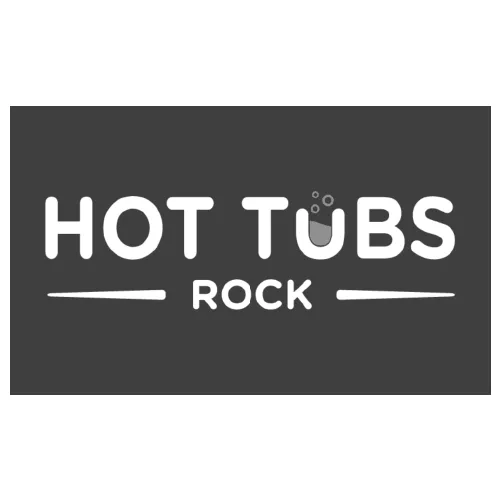
No items found.
If Legionella is found in your water system during a Legionella risk assessment, it will need to be disinfected in accordance with guidance in HSG274 and PD 855468:2015.
In this guide, we are going to discuss some of the methods used for Legionella disinfection, why it is important to disinfect your system, which method might be best for your Legionella compliance, how often disinfection is needed, who should carry it out and what records should be kept.
There are two main reasons why Legionella disinfection is important: safety and legal compliance.
Firstly, Legionella bacteria pose a health risk to building occupants. They grow in water that sits at temperatures between 20˚C and 45˚C, and can be dispersed in water vapour and inhaled. They can then lead to the development of Legionnaires’ disease, which is a potentially severe form of pneumonia. Research from Public Health England suggests that there are around 4,000 to 6,000 cases of Legionnaires’ disease in the UK every year, and it kills between 7% and 12% of those it infects.
Because of the health risks, there are strict water hygiene guidelines which govern the control of Legionella growth in water systems as well as the methods for disinfection. These include HSG274 and BS 8558:2015. It is vital that employers, property managers and those with health and safety responsibilities (duty holders) meet their obligations to protect building occupants.
When it comes to how to treat Legionella in water, there is a broad range of methods, each with its own pros and cons and use cases. HSG274 lists a selection of disinfection techniques.
Water testing in Shropshire
Water testing in South Wales
Water testing in Hereford
Water testing in the West Midlands
Water testing in Worcester
Water testing in Gloucester
Water testing in Manchester
Water testing in Liverpool
Heat disinfection, or temperature control, is one of the most common and simplest methods of water tank disinfection and system sanitisation for Legionella. The bacteria grow readily in water between 20˚C and 45˚C. Below 20˚C they go into a form of hibernation state and cannot grow, but above 45˚C , they struggle to survive. By raising or lowering the temperature of the water in your system, you can kill existing Legionella as well as prevent future growth.
Long-term thermal disinfection is performed by ensuring that water for cold outlets does not rise above 20˚C and hot water systems do not drop below 50˚C , or 55˚C for healthcare settings.
Sodium hypochlorite, or chlorine, is used as both a routine and reactive treatment, especially when Legionella levels are particularly high. It is a strong oxidising biocide which disrupts bacterial cells and causes cell death.
While sodium hypchlorite can be used for ongoing disinfection, it is more often applied as a shock or periodic disinfectant to quickly reduce high Legionella populations.
Ultraviolet (UV) light can be used to kill a wide range of pathogens, including Legionella. Installing UV lights into water systems can be an effective long-term method of water hygiene control, but it is recommended that it be used in conjunction with other spot treatments for maximum efficacy. This system is also used by the NHS but is commonly found in spa pools and hot water systems too.
UV water treatment units use specially designed bulbs made of transparent quartz. Water is passed in front of the bulb inside a contained disinfection unit. It is important that the right level of UV exposure is achieved to ensure safe treatment. This is measured in milliwatt seconds per square centimetre (mW.s/cm²).
Chlorine dioxide is a commonly used method of Legionella disinfection, particularly where temperature control is difficult to maintain. It is added to the system in very low doses on an ongoing basis, preventing bacterial growth.
Because chlorine dioxide penetrates biofilms and produces fewer harmful byproducts than traditional chlorination, it is usually preferred for potable water systems. It is common for water systems to be fitted with a chlorine dioxide dosing unit, which automatically dispenses and regulates treatment.
Copper and silver ionisation is a chemical-free method of Legionella disinfection. It uses an electrical system which passes a DC current through copper and silver electrodes, causing them to release ions into the water. These ions kill bacteria by interfering with their internal processes and keep the system free from Legionella and other pathogens.
This method is commonly used by the NHS to disinfect water systems at healthcare facilities but works best in soft water. Unlike chemical methods such as chlorination, it does not create any environmentally harmful byproducts and is usually effective in destroying the Legionella biofilm – a membrane which protects the Legionella cells and allows them to reproduce.
Legionella is among a range of bacterium that can be captured using specialised filters. By placing suitable filters at points of water use, such as taps and showerheads, it is possible to stop Legionella from being dispersed in water vapour.
This method does not prevent Legionella from growing in the first place however, and the filters will need to be regularly changed every one to three months to remain effective and to prevent clogging. This brings ongoing costs and can make filters an impractical and costly solution for many. However, they are a chemical-free method and have the added benefit of removing other particulates from your water too.
As we have discussed, there is a range of methods for how to treat Legionella in water. The right one for you will depend on your system and building usage.
Employers, landlords and building managers are legally responsible for controlling Legionella in their water systems in accordance with ACOP L8. A Legionella risk assessment should form the basis of your control programme, and will help you identify risk areas, necessary remdial work and, if necessary, the correct Legionella treatment method.
The best way to determine the right solution for you is to speak with an expert water hygiene consultancy or your risk assessment provider. They can advise on the best Legionella compliance method for your premises.
Some methods of Legionella disinfection will be more disruptive than others. If your system simply requires simple long-term prevention methods such as heat disinfection, then you should experience minimal disruption if any at all.
However, if you are advised to install more complex systems, such as UV treatment or chlorine dosing, then a little more disruption might be caused while these are fitted. Although a dependable Legionella consultant should be able to advise on timelines as well as work with you to minimise any disruption.
The best way to determine the right solution for you is to speak with an expert water hygiene consultancy or your risk assessment provider. They can advise on the best Legionella compliance method for your premises.
There are a number of particular circumstances when Legionella disinfection should be considered, either as a one-off remedial step or as a long-term control solution:
A Legionnaires’ Outbreak
If there is an outbreak of Legionnaires’ disease in your area, you may need to test and disinfect your system.

Vacant Properties
If your building has been vacant for more than a few weeks, treatment can help ensure that any Legionella that has grown in the system is killed.
Changes to Your System
Changes or upgrades to your system can have unpredictable consequences for water hygiene, particularly if sections of your system are left unused during work.
Poor Water Sample Results
Poor water sample results could be indicative of wider issues in your system. Disinfection can make sure that Legionella has not spread as a consequence.
Legionella Risk Assessment
If your Legionella risk assessment has suggested the need for disinfection, you should take action as soon as possible.
Legionella disinfection is a scientific process that should be carried out by someone who is competent, trained and has the equipment and understanding necessary to ensure effective treatment as well as monitor the outcomes.
This most often takes the form of a water hygiene consultancy such as EMS, which has a wealth of expertise as well as a team of highly trained specialists on hand to provide everything from Legionella risk assessments to ongoing treatment and monitoring services.
The HSE requires that thorough records be kept of all actions taken to control Legionella, and that these are available for inspection if needed. So, to remain compliant, you should obtain and keep records of Legionella disinfection. Your treatment provider should give you documentation regarding the type of disinfection used, concentrations of any chemicals and the date on which the treatment took place.
Legionella disinfection and water hygiene control are potentially complex processes, some involving the very careful use of chemical substances. Mistakes can lead to a range of consequences, from system damage to occupant harm. As a result, they are best left to professional, accredited providers like EMS.
We are a turnkey water hygiene consultancy specialising in BS 8580-1:2019 compliant Legionella risk assessment as well as Legionella monitoring and treatment, helping you maintain worry-free compliance with key legislation and guidance including the Health and Safety at Work Act, ACOP L8 and HSG274. With years of experience and an expert team, we are the trusted choice for all manner of water hygiene services across the heart of the UK, including in Worcester, Herefordshire, the West Midlands and Wales.
To book your Legionella risk assessment or disinfection, call us today on 0800 358 110, email us at info@emswater.co.uk or fill out our contact form.
Water testing in Shropshire
Water testing in South Wales
Water testing in Hereford
Water testing in the West Midlands
Water testing in Worcester
Water testing in Gloucester
Water testing in Manchester
Water testing in Liverpool



